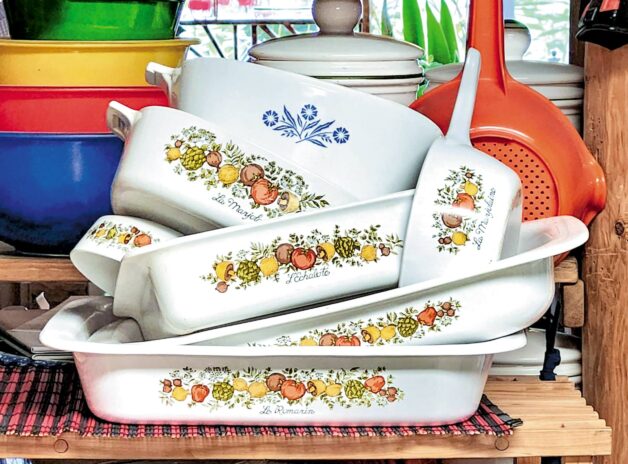 That old Corningware dish that now sits outside as the dog’s water bowl — grab it up and dust it off, for it might be worth a couple of grand or more. Absurd? I also thought so, but am seeing many occurrences of outrageously priced vintage Corningware cookware.
That old Corningware dish that now sits outside as the dog’s water bowl — grab it up and dust it off, for it might be worth a couple of grand or more. Absurd? I also thought so, but am seeing many occurrences of outrageously priced vintage Corningware cookware.
It got me thinking about future thrifting down the road.
Future thrifting predictions are complicated in that the subject is different today, when used items are marketed online and on television. National enterprises like Goodwill and St. Vincent de Paul are now including new merchandise and bringing their profitable treasures to online venues. The traditional walk-in thrift stores are as popular as ever, but most change, as donations change over time.
I want to make thrifting predictions for 20 years down the road. Today we are full, maybe having too much and wanting more — a zillion pairs of jeans, wine glasses to the ceiling, and who needs five raincoats? Then there is the donating side, where many folks can’t let go, particularly seniors at a downsizing stage whose kids don’t want their grandmother’s dish sets or the boxes of baby toys.
Whether it’s clothes, electronics or kitchenware, there is a lot of content in the thrift market. Why? Mainly because of China’s mass production with cheap labor. I predicted this would happen some 20 years ago with the introduction of NAFTA. Pair that with the decline of boomers, and you have packed thrift shelves and endless lines of clothing. I’ve never seen so many clothes items with original tags as I have recently.
What do I see for tomorrow? (Where’s that dog dish?) I see less product choice, more condensed living with multiples, living closer to work areas, high quality of living, less in-house entertaining, less cooking prep, more control electronics and the presence of artificial intelligence. I also see a comeback of more textiles, colors, patterns and curiosity about kitchenware history.
With a new appreciation, folks will probably keep more, so thrifters will find less, and pricing will be affected accordingly.
Those kids who don’t want grandma’s stuff — time passes and when they become grown-ups, they will be begging.

























